
While you cannot see or touch a company's culture, its consequences are seen in the behaviors, actions, and approaches of all members within an organization. As a company constantly competing for the best possible talent, how do you ensure you’re fostering a company culture that is rooted in employee happiness, knowing that happier employees make for better business? What has always been true about employee engagement maintains its validity today. That's why we've developed this guide of practical tips to inspire you to adopt tried and true culture-creation strategies that continue to drive forward the workforce of today.
In an increasingly competitive corporate world, being viewed as a great place to work could be the difference between success and failure. This guide can help you boost employee engagement and happiness, reduce voluntary turnover, create a stronger internal culture, and attract top talent. Embrace the insights in this guide and take the next step in building a place where employees love
to work.
This guide includes:
- Key industry data
- 16 best practice quotes from leading culture influencers, both past and present
- 28 proven tips for building a culture rooted in employee happiness
Timeless Truths: Employee Happiness
Then
“Connect the dots between individual roles and the goals of the organization. When people see that connection, they get a lot of energy out of work. They feel the importance, dignity, and meaning in their job.” — Ken Blanchard, Author and Founder, The Ken Blanchard Companies
Now
“Determine what behaviors and beliefs you value as a company and have everyone live true to them. These behaviors and beliefs should be so essential to your core that you don’t even think of it as
a culture.” — Brittany Forsyth, VP of Human Relations, Shopify
Practical Tips
- Make sure your core values are true now and are embodied by your best employees most of the time.
- Avoid establishing core values that are “permission to play” or are too aspirational.
- Make posters for each of your core values and hang them throughout the common areas in your office, like near the lunch tables, kitchen space, or in conference rooms.
- Randomly quiz employees on what your company’s core values are; we guarantee they’ll remember them after a certain period of time.
- Make sure you have behavioral examples for each of your core values so people know how they’re expected to live them.
- It’s also important that organizational leaders lead by example and visibly embody the core values they want
to reinforce.
Timeless Truths: Collaboration
Then
“A group of people get together and exist as an institution we called a company, so they are able to accomplish something collectively that they could not accomplish separately — they make a contribution to society, a phrase which sounds trite, but is fundamental.” — David Packard, Co-founder, Hewlett-Packard
Now
“One of our values is that you should be looking out for each other. Everyone should try to make the lives of everyone else who works here a little bit simpler.” — Stewart Butterfield, Founder, Slack
Practical Tips
- Always clarify who is in charge of what when you assign someone a project. Ironically, people are more comfortable collaborating when they know who is ultimately responsible and what their role in the process is.
- If you want people to have a stake in owning the results, bring them into the process to collaborate with you. Having cross-functional teams for major initiatives helps get employees involved and excited.
- Create one clear thematic goal that sets the tone for the entire quarter. This goal should reflect what is most important to the company right now, and every employee’s key objectives for that time period should tie together to achieve that one common goal.
Timeless Truths: Employee Engagement
Then
“There are only three measurements that tell you nearly everything you need to know about your organization’s overall performance: employee engagement, customer satisfaction, and cash flow. It goes without saying that no company, small or large, can win over the long run without energized employees who believe in the mission and understand how to achieve it.” — Jack Welch , Former CEO, General Electric
Now
“If you want employees to feel appreciated, you need to celebrate their achievements regularly and publicly.” — Logan Green, Co-Founder, Lyft
Practical Tips
- Regularly measure your employee engagement levels through quick surveys that don't fatigue your employees. Keep those metrics in the same place you keep your other business KPIs.
- If you start to forget how important employee engagement is because of its intangible nature, remember that engaged employees outperform those who are unengaged by 22% (Gallup). Calculate what that means for your company to see the value.
- The difference in the number of sick days taken between engaged and unengaged employees is four days per year (Madi- son 2014). Calculate your average daily wage by those four lost days per unengaged employee and see how much money you’re losing from that consequence of disengagement alone.
- Employee engagement starts at the top. Studies show that key drivers of employee engagement are the actions of senior leaders. Have each executive include a “how I’ll keep my employees engaged” section in their strategic plans.
Timeless Truths: Productivity
Then
“Productivity is never an accident. It is always the result of a commitment to excellence, intelligent planning, and focused effort." — Paul J. Meyer, Author and pioneer in the personal development industry
Now
“Employees who believe that management is concerned about them as a whole person — not just an employee — are more productive, more satisfied, more fulfilled. Satisfied employees mean satisfied customers, which leads to profitability." — Anne Mulcahy, Former CEO, Xerox
Practical Tips
- Pair each new hire with a buddy or mentor. Early mentoring not only increases the amount of productivity that you will see in newly onboarded team members, but also reduces turnover and improves skills of new employees (Professor Jonah Rockoff, Columbia University, 2008).
- Educate managers on how to be attuned to employees’ moods and emotional health. The most productive individuals are the ones who see the greatest improvement in their moods before having to execute a task, which highlights the importance of facilitating strong feedback channels within teams.
- Organize your office so that your employees have the flexibility to work in the spaces that help them stay focused: their personal desk space, conference rooms, kitchen and eating areas, lobby or lounge areas.
Timeless Truths: Recognition
Then
“Start with good people, lay out the rules, communicate with your employees, motivate them and reward them. If you can do all those things effectively, you can’t miss.” — Lee Iacocca, Former American automobile executive and developer of the Ford Mustang
Now
“People leave when they don’t feel appreciated. That’s why we’ve made recognition a really high value. Our business is people-capability first; then you satisfy customers; then you make money." — David Novak, CEO, YUM! Brands
Practical Tips
- Leaders and managers should complement their in-person, one-on-ones with unexpected moments of recognition. It's always exciting to receive positive feedback that you didn't expect — either about something you did or even from a person you don't regularly hear from.
- Encourage peer-to-peer recognition by allowing employees to give vocal shout-outs to their peers in an open forum, such as an all hands meeting. Reserve time at the end of these gatherings for people to call out individuals that recently went above and beyond to help complete a task, exhibited a sense of urgency turning around a project, or went out of their way to be a team player.
- Personalize recognition to help reinforce behaviors that need repeating. Be specific with your employees when thanking them for a job well done so that they’re aware of exactly what they’ve done well.
Timeless Truths: Diversity
Then
“Creating and managing a diverse workforce is a process, not a destination.” — R. Roosevelt Thomas, Jr., Author and CEO, R. Thomas Consulting & Training, Inc.
Now
“Endless data shows that diverse teams make better decisions. We are building products that people with very diverse knowledge backgrounds use, and I think we all want our company makeup to reflect the makeup of the people who use our products.“ — Sheryl Sandberg, COO, Facebook
Practical Tips
- Write down the definition of what diversity means for your company, recognizing that everyone thinks about diversity differently.
- Keep in mind that most biases are unconscious. Try to identify the ones that you may not be considering actively and find a way to overcome them.
- When you explain the importance of diversity to employees, explain how increased diversity will improve your company’s business results.
Timeless Truths: Employee Appreciation
Then
“Appreciate everything your associates do for the business. Nothing else can quite substitute for a few well-chosen, well-timed, sincere words of praise. They're absolutely free and worth a fortune.” — Sam Walton, Founder, Walmart & Sam’s Club
Now
“I have always believed that the way you treat your employees is the way they will treat your customers, and that people flourish when they are praised.“ — Sir Richard Branson, Founder, Virgin Group
Practical Tips
- Reward your employees for their contributions in the workplace. This can be as simple as offering to take them to lunch or as big as sending them on a trip. This behavior ultimately leads to an increase in employee happiness and a stronger desire to positively influence the future success of the organization.
- Build a culture of appreciation by saying “thank you.” Whether it’s in a written note or through the spoken word, it shows that you value your employees’ efforts and opinions, and it helps to build trust along the way.
- One trick for making employees feel special is by celebrating their birthdays. Present them with a card signed by the team or a small, personalized gift. This will encourage employees to establish closer ties and goodwill within the company.
Reward Gateway has acquired Fond!
Schedule a demo to learn how Reward Gateway can help you:

 “Connect the dots between individual roles and the goals of the organization. When people see that connection, they get a lot of energy out of work. They feel the importance, dignity, and meaning in their job.” — Ken Blanchard, Author and Founder, The Ken Blanchard
“Connect the dots between individual roles and the goals of the organization. When people see that connection, they get a lot of energy out of work. They feel the importance, dignity, and meaning in their job.” — Ken Blanchard, Author and Founder, The Ken Blanchard  “Determine what behaviors and beliefs you value as a company and have everyone live true to them. These behaviors and beliefs should be so essential to your core that you don’t even think of it as
“Determine what behaviors and beliefs you value as a company and have everyone live true to them. These behaviors and beliefs should be so essential to your core that you don’t even think of it as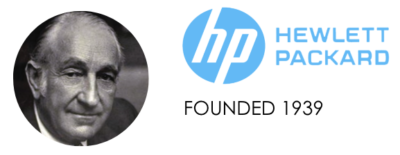 “A group of people get together and exist as an institution we called a company, so they are able to accomplish something collectively that they could not accomplish separately — they make a contribution to society, a phrase which sounds trite, but is fundamental.” — David Packard, Co-founder, Hewlett-Packard
“A group of people get together and exist as an institution we called a company, so they are able to accomplish something collectively that they could not accomplish separately — they make a contribution to society, a phrase which sounds trite, but is fundamental.” — David Packard, Co-founder, Hewlett-Packard “One of our values is that you should be looking out for each other. Everyone should try to make the lives of everyone else who works here a little bit simpler.” — Stewart Butterfield, Founder, Slack
“One of our values is that you should be looking out for each other. Everyone should try to make the lives of everyone else who works here a little bit simpler.” — Stewart Butterfield, Founder, Slack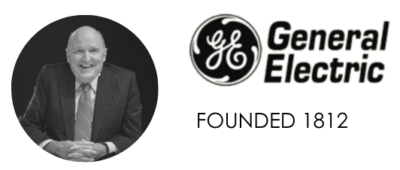 “There are only three measurements that tell you nearly everything you need to know about your organization’s overall performance: employee engagement, customer satisfaction, and cash flow. It goes without saying that no company, small or large, can win over the long run without energized employees who believe in the mission and understand how to achieve it.” — Jack Welch , Former CEO, General Electric
“There are only three measurements that tell you nearly everything you need to know about your organization’s overall performance: employee engagement, customer satisfaction, and cash flow. It goes without saying that no company, small or large, can win over the long run without energized employees who believe in the mission and understand how to achieve it.” — Jack Welch , Former CEO, General Electric “If you want employees to feel appreciated, you need to celebrate their achievements regularly and publicly.” — Logan Green, Co-Founder, Lyft
“If you want employees to feel appreciated, you need to celebrate their achievements regularly and publicly.” — Logan Green, Co-Founder, Lyft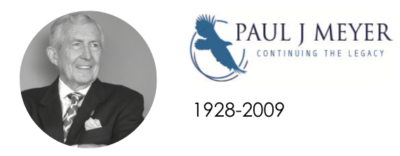 “Productivity is never an accident. It is always the result of a commitment to excellence, intelligent planning, and focused effort." —
“Productivity is never an accident. It is always the result of a commitment to excellence, intelligent planning, and focused effort." — 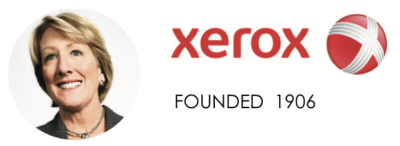 “Employees who believe that management is concerned about them as a whole person — not just an employee — are more productive, more satisfied, more fulfilled. Satisfied employees mean satisfied customers, which leads to profitability." — Anne Mulcahy, Former CEO, Xerox
“Employees who believe that management is concerned about them as a whole person — not just an employee — are more productive, more satisfied, more fulfilled. Satisfied employees mean satisfied customers, which leads to profitability." — Anne Mulcahy, Former CEO, Xerox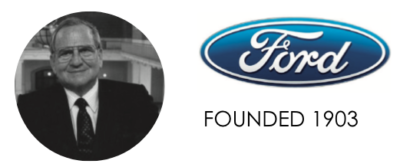 “Start with good people, lay out the rules, communicate with your employees, motivate them and reward them. If you can do all those things effectively, you can’t miss.” — Lee Iacocca, Former American automobile executive and developer of the Ford Mustang
“Start with good people, lay out the rules, communicate with your employees, motivate them and reward them. If you can do all those things effectively, you can’t miss.” — Lee Iacocca, Former American automobile executive and developer of the Ford Mustang “People leave when they don’t feel appreciated. That’s why we’ve made recognition a really high value. Our business is people-capability first; then you satisfy customers; then you make money." — David Novak, CEO, YUM! Brands
“People leave when they don’t feel appreciated. That’s why we’ve made recognition a really high value. Our business is people-capability first; then you satisfy customers; then you make money." — David Novak, CEO, YUM! Brands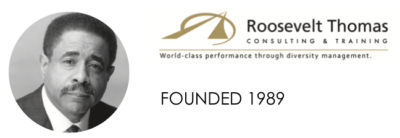 “Creating and managing a diverse workforce is a process, not a destination.” — R. Roosevelt Thomas, Jr., Author and CEO, R. Thomas Consulting & Training, Inc.
“Creating and managing a diverse workforce is a process, not a destination.” — R. Roosevelt Thomas, Jr., Author and CEO, R. Thomas Consulting & Training, Inc. “Endless data shows that diverse teams make better decisions. We are building products that people with very diverse knowledge backgrounds use, and I think we all want our company makeup to reflect the makeup of the people who use our products.“ — Sheryl Sandberg, COO, Facebook
“Endless data shows that diverse teams make better decisions. We are building products that people with very diverse knowledge backgrounds use, and I think we all want our company makeup to reflect the makeup of the people who use our products.“ — Sheryl Sandberg, COO, Facebook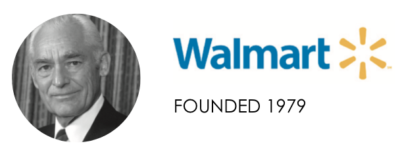 “Appreciate everything your associates do for the business. Nothing else can quite substitute for a few well-chosen, well-timed, sincere words of praise. They're absolutely free and worth a fortune.” — Sam Walton, Founder, Walmart & Sam’s Club
“Appreciate everything your associates do for the business. Nothing else can quite substitute for a few well-chosen, well-timed, sincere words of praise. They're absolutely free and worth a fortune.” — Sam Walton, Founder, Walmart & Sam’s Club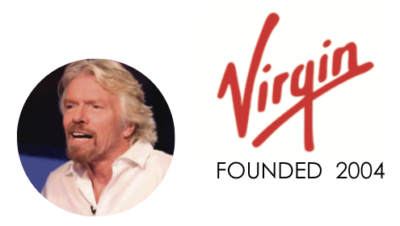 “I have always believed that the way you treat your employees is the way they will treat your customers, and that people flourish when they are praised.“ — Sir Richard Branson, Founder, Virgin Group
“I have always believed that the way you treat your employees is the way they will treat your customers, and that people flourish when they are praised.“ — Sir Richard Branson, Founder, Virgin Group